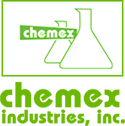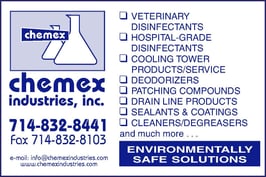Have we been through the worst of it? I’m reaching out to consumers who we have had the honor of working with, over the past years. With our primary focus on healthcare, we were foremost in consultations and distribution of disinfectants from the onset of the pandemic. The necessity for appropriate chemistry along with full knowledge of dilution, dwell times, and application options were crucial. A person utilizing the best chemistry without awareness of proper application would fail at disinfection. Similarly, a person with full knowledge of the best application procedures and without the appropriate chemistry would also fail to disinfect. It’s obviously a combination of the two. In addition, we utilized Rapid ATP Testing to verify our hygiene efforts.
Maintaining our focus on the appropriate sanitation of our workplace remains essential. With NHL playoff games and NBA basketball finals within days of reaching the championship series, we see a “full house” of approximately 20,000 fans in attendance. The majority are without masks. Restaurants and banquet halls are at capacity again. – This cannot be a time to diminish our sanitation efforts. Not only are we frequently learning about new viral strains, but Monkeypox a rare disease that's a cousin of smallpox is also now infecting most countries throughout the world, including the USA, Canada, and Mexico. An abrupt change in C.D.C. guidance underscores a little-known phenomenon: On occasion, Monkeypox can be transmitted through aerosols, like the coronavirus.
Real Estate and Office buildings are reorganizing to have employees back at the workplace. Food Service demands that patrons remain healthy while dining. Dental and Medical professionals are at the highest risk and must remain vigilant in observing the highest protocol. Facility engineers must also be alert to potential areas for an outbreak. - An investigation into popular pool clubs on the Las Vegas Strip (June 2nd, 2022) revealed the presence of bacteria and even E. coli. The pool water samples were sent to IEH Laboratories in Seattle for testing, and the results were reviewed by Dr. Susan Whittier, a clinical microbiologist at Columbia University. - "We found a lot of fecal bacteria in some of these pools," Whittier told Inside Edition. "The potential for infection occurring seems inevitable." "I never expected to see those numbers of bacteria that we found," Whittier said. "It's kind of similar to like, swimming in a toilet." You can read the full story here.
News stories as above are deal-breakers.
More and more we are learning that airborne transmission of infections has ramped up. Air currents from HVAC equipment as well as other ventilation methods transmit bacteria and viruses through small respiratory droplets. Airborne diseases linger in dust particles and respiratory droplets, which are eventually inhaled by other people. In fact, you don’t need to be in the same room as a sick person to contract an airborne disease. These droplets are expelled when someone with a disease sneezes, coughs, laughs, or otherwise exhales in some way. These infectious vehicles can travel along air currents, linger in the air, or cling to surfaces, where they are eventually inhaled by someone else. The EPA ranks indoor air pollution among the top five threats to public health.
In addition to SARS-CoV-2, Measles is another airborne disease, with the virus having a survival capability for up to 2 hours in the air once the infected person leaves an area. Another infection is Tuberculosis, or TB, which is a bacterial disease of the lungs and throat. When a person with TB coughs, speaks, or laughs, the TB bacteria are released into the air. TB is not transmitted through touching, kissing, or sharing food.
Preventing Airborne Diseases
Practicing healthy behaviors while indoors is crucial for preventing the spread of airborne diseases. Some of the best and simplest preventative measures are:
- Cough or sneeze into a handkerchief or into your elbow.
- Wash your hands frequently.
- Regularly clean common surfaces, like doorknobs, counters, handles, and more.
Additionally, make sure indoor locations have proper ventilation that can keep bacteria and viruses out of the air. Stagnant air encourages diseases to spread.
We at Chemex have been distributing scientific equipment manufactured to prevent infection and sanitize the air. These mechanisms all employ UV and UVC lighting for sanitization and disinfection. For the last 12-14 months we have been providing air sanitization technologies that employ hydroxyl gas as the active agent, without producing dangerous ozone. This technology was first used by NASA within the Space Station. The FDA has recognized this technology and its value to medical facilities. The CDC states that ultraviolet irradiation of air is an effective means of “reducing the transmission of airborne bacterial and viral infections in hospitals.”
These new devices have substantial cost savings over previous units. There are two devices available: The Breeze with the capability of sanitizing up to 160 sq. feet. These are used in elevators, pods, and smaller workspaces. The other unit is the Refresh, with a capacity of 850 sq. ft.
To appreciate this technology and learn more:
REFRESH -Total Sanitization of air + benefits for hard & soft surfaces
Breeze with UVC irradiation of air to reduce the transmission of airborne and bacterial Infections

